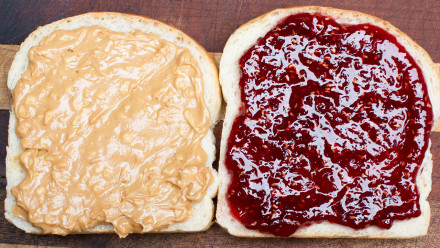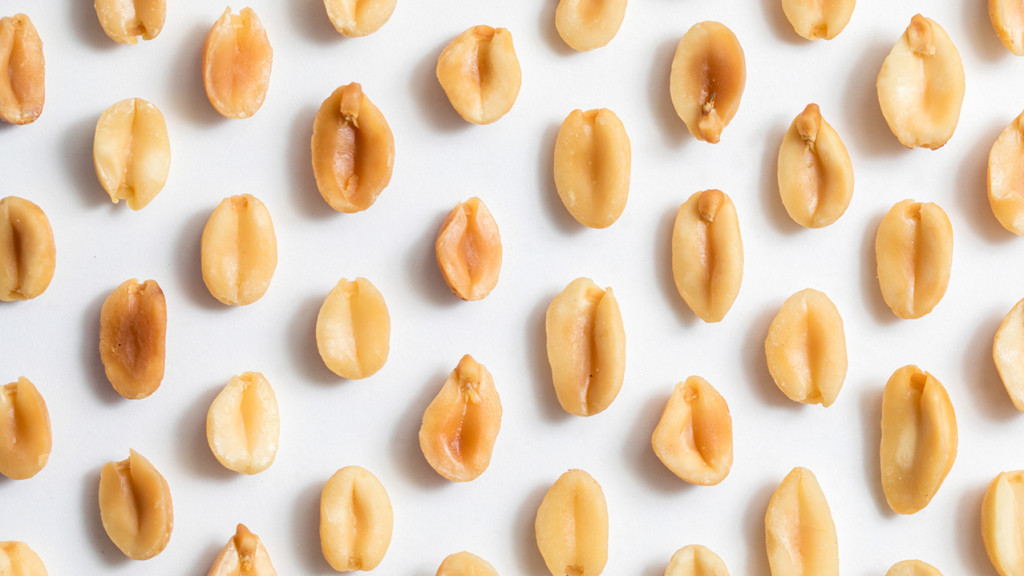Photo: iStockphoto
Of all the food allergies, peanut has the best PR. “Peanut-free zone” signs hang on classroom doors, “no peanut” symbols are stamped on candy packages, and apps allow you to scan packaged goods to ensure that they don’t contain peanuts. And there’s good reason for it: “Peanut is, arguably, the most common food to cause a severe reaction,” says Harold Kim, an allergist in Kitchener, Ont., and president of the Canadian Society of Allergy and Clinical Immunology. “It seems to affect kids at a very young age and is usually lifelong.”
What is a peanut allergy, and how common is it?
A peanut allergy develops when your immune system mistakenly identifies peanut proteins as dangerous and releases antibodies to attack them, causing an allergic reaction.
Between one and three percent of children are allergic to peanut—a number that doubled between 2005 and 2015 before continuing to climb at a slower rate. No one knows for sure why peanut allergies have been increasing, but years of recommendations to delay introducing them to kids may be partly to blame.

Here’s why banning peanuts in schools might not be the best answerToday, research shows that early introduction—between four and 11 months old—can reduce the likelihood of developing an allergy. A landmark randomized controlled trial published in 2015 found that children who were at high risk of developing a peanut allergy—those with severe eczema or an egg allergy—had a three percent chance of becoming allergic by age five if they ate six grams of peanut a week compared to a 17 percent chance if they ate none.
“If we get the food in early enough, the gut will help the immune system develop a tolerance, where there’s no allergic reaction against the food,” explains Kim. “Based on that landmark study, we now recommend that peanut be introduced early. Many of us have extrapolated to other foods as well, including milk, eggs and tree nuts.”
However, if your baby is at high risk of a peanut allergy, they should be assessed by an allergist before peanut is introduced. If you have other concerns about giving your baby peanut, like an older sibling with a peanut allergy, talk to your doctor about the best way to proceed.
When do peanut allergies usually develop?
Around 80 percent of children who are allergic to peanut have a reaction on their first known exposure. However, to become allergic, kids have to be exposed to the allergen in some way first, by unknowingly eating it, being exposed through their skin or coming in contact with it in other ways that are not yet well understood by experts.
Babies can even have a reaction to peanut proteins in breastmilk, though it’s very rare. One study found that peanut proteins showed up in the breastmilk of about half of women who ate half a cup of dry-roasted peanuts. The proteins were present about one to three hours after the women ate peanuts and quickly cleared from their milk.
What are the symptoms of a peanut allergy?
Signs of an allergic reaction usually set in within minutes of eating peanut and can quickly escalate. Skin reactions are common and include hives, flushing, swelling and itchiness. The inside of the mouth and the throat may become itchy or tingly, and the throat may tighten. Sometimes symptoms are similar to seasonal allergies and include sneezing, a runny nose and itchy, watery eyes. Children may also vomit or have diarrhea after eating peanut.
“It can be hard to diagnose allergic reactions in infants because they can’t verbalize their symptoms, but it’s usually obvious when there’s some flushing or hives after they eat,” says Kim, who adds that babies may reach for their mouths or throats.
Anaphylaxis is a life-threatening allergic reaction that requires immediate medical attention. During anaphylaxis, a child may have trouble breathing or experience a drop in blood pressure, which can lead to dizziness, light-headedness and a loss of consciousness. Two body systems are often involved (for example, a child may have skin symptoms and vomit) or one symptom may progress rapidly (such as hives spreading all over the body).
Peanut is the most likely food to cause anaphylaxis and death. A 2014 study of anaphylaxis-related deaths in Ontario from 1986 to 2011 found that peanut was responsible for 40 percent of food allergy deaths.
How do you treat a peanut allergy?
If your child has a mild reaction to peanut for the first time, such as itchy skin, it’s safe to observe them closely without taking other immediate action, says Kim. If the reaction doesn’t progress, you should see your doctor as soon as possible for an assessment.
If your child has a serious reaction, you should call 911 immediately. At the hospital, they may be given epinephrine, a life-saving drug that stops the reaction. They may also be given antihistamines and steroids and be monitored. If you’re unsure if the reaction is mild or severe, you should call 911.
Once your child has been diagnosed with a peanut allergy, you should ensure that they avoid peanut and have an epinephrine auto-injector (called by the brand name EpiPen in Canada) on hand at all times. Everyone who cares for your child should be aware of their allergy and know how to administer an EpiPen. If your child has a serious reaction, you should give them an EpiPen and call 911.
Reactions can be different every time, and Kim recommends erring on the side of caution and treating them with epinephrine when in doubt. “If hives or a rash develop very rapidly after eating, there’s potential for that reaction to be severe,” says Kim. “We generally recommend using an EpiPen, but it’s a bit of a judgment call when there’s no definite shortness of breath or light-headedness.”
If your child has mild symptoms that are not progressing but are bothersome, such as itchy, watery eyes and hives, you can give them a non-drowsy antihistamine. Kim says it’s important to wait at least 30 minutes before giving the antihistamine to ensure that the reaction isn’t escalating, as an antihistamine can mask the progression of symptoms.
Is there a cure for a peanut allergy?
There is no cure for a peanut allergy. While it can be life-threatening, the good news is that there’s a treatment in development that can help children develop a tolerance to peanut. Research has found that oral immunotherapy, during which children eat gradually increasing amounts of peanut proteins daily to build up tolerance, shows a lot of promise.
A clinical trial completed in 2017 found that nearly 80 percent of preschool children with peanut allergies could safely reintroduce peanut into their diets after receiving immunotherapy daily over an average of 29 months. The treatment has also been shown to reduce the likelihood of anaphylaxis. In another study, led by researchers at the University of British Columbia and BC Children’s Hospital and published in April, 90 percent of children were desensitized after 16 to 22 weeks of oral immunotherapy. Oral immunotherapy should always be done under the supervision of a doctor.
“The research behind immunotherapy is very good in terms of quality, so more of us are doing it,” says Kim. Oral immunotherapy for the treatment of allergies hasn’t yet been approved by Health Canada or the Food and Drug Administration, but some allergists perform it and patients may have to pay out of pocket or join a clinical trial to receive treatment. “There may also be peanut patch immunotherapy coming, where you apply the peanut antigen to the skin. Hopefully, it will be available in the next few years.”
How do you diagnose a peanut allergy?
If your child has a reaction after eating peanut, a skin prick test, a blood test or both will be done by an allergist to confirm the diagnosis. During a skin prick test, your child’s skin is exposed to the allergen to see how big of a weal (an area of irritated skin) develops. The larger the wheal, the more likely it is that your child is allergic. Tests are usually repeated at follow-up appointments, every six months to every few years, to see if the child has developed a tolerance.
An oral food challenge, during which the child consumes peanut under the supervision of a doctor, may also be offered. The oral food challenge is the gold standard diagnostic test, says Kim. However, it’s usually only offered if the child has less than a 50 percent chance of reacting, which is based on their skin and blood tests.
What foods should your child avoid if they have a peanut allergy?
Peanut is difficult to avoid because it shows up in so many products and dishes. “Peanut is in all kinds of things,” says Kim. “It’s common in many ethnic foods, and it’s eaten by many of us around the world.”
Packaged foods that may contain peanut include cereals, granola bars and snack foods, such as pretzels and popcorn. There are even artificial nuts made from peanut products, so it’s important to always read the labels. In Canada, products must be clearly labelled if they contain peanut, but precautionary statements for products that may contain peanut due to cross-contamination are voluntary. Check with the manufacturer directly if you’re concerned.
Peanut can also be found in non-food items that attract kids, such as toys, bird feed and craft supplies. Sunscreen and other personal care products may even contain peanut, so it’s important to check before slathering anything on your child.
Studies have found that between 20 and 68 percent of people with peanut allergies are also allergic to tree nuts, including cashews, pecans and almonds. But, unlike tree nuts, peanuts are legumes and grow in the ground, and about five to 10 percent of children with peanut allergies will also be allergic to other legumes, such as peas and lentils. However, Kim says kids should still eat other nuts and legumes unless they show signs of being allergic.
Can a peanut allergy be outgrown?
Without immunotherapy, a peanut allergy usually lasts for life, but about 15 to 20 percent of kids outgrow it naturally, usually by age six. After a child turns 10, it’s unlikely that they will outgrow the allergy.
In those kids who outgrow peanut allergies, their immune systems just become tolerant to peanut, but it’s not known why, says Kim. However, he points out that kids who have milder reactions are more like to outgrow the allergies.
To potentially avoid this life-altering allergy, Kim urges parents to give peanut to their babies. “We think that if we treat kids with early introduction, we might prevent peanut allergies in a lot of them,” he says.
Kim recommends putting a thin layer of peanut butter on a cracker or making a slurry with peanut butter and water and adding it to cereal. “We don’t recommend straight peanut butter because it can be thick and difficult to swallow,” he says. Kim adds that some parents give their children a peanut snack called Bamba, which is like a peanut butter cheese puff, or add peanut flour to other foods.
Kim has heard of some parents giving their children peanut for the first time in a hospital parking lot or lobby just in case they have a reaction, but he says that’s usually unnecessary. “I can understand why they do that, but it’s not required for the vast majority of people,” he says. “The risk of having a severe reaction with the first ingestion is quite small.”
Read more:
How to know if your kid has a food allergy or food intolerance
14 peanut-free snacks


